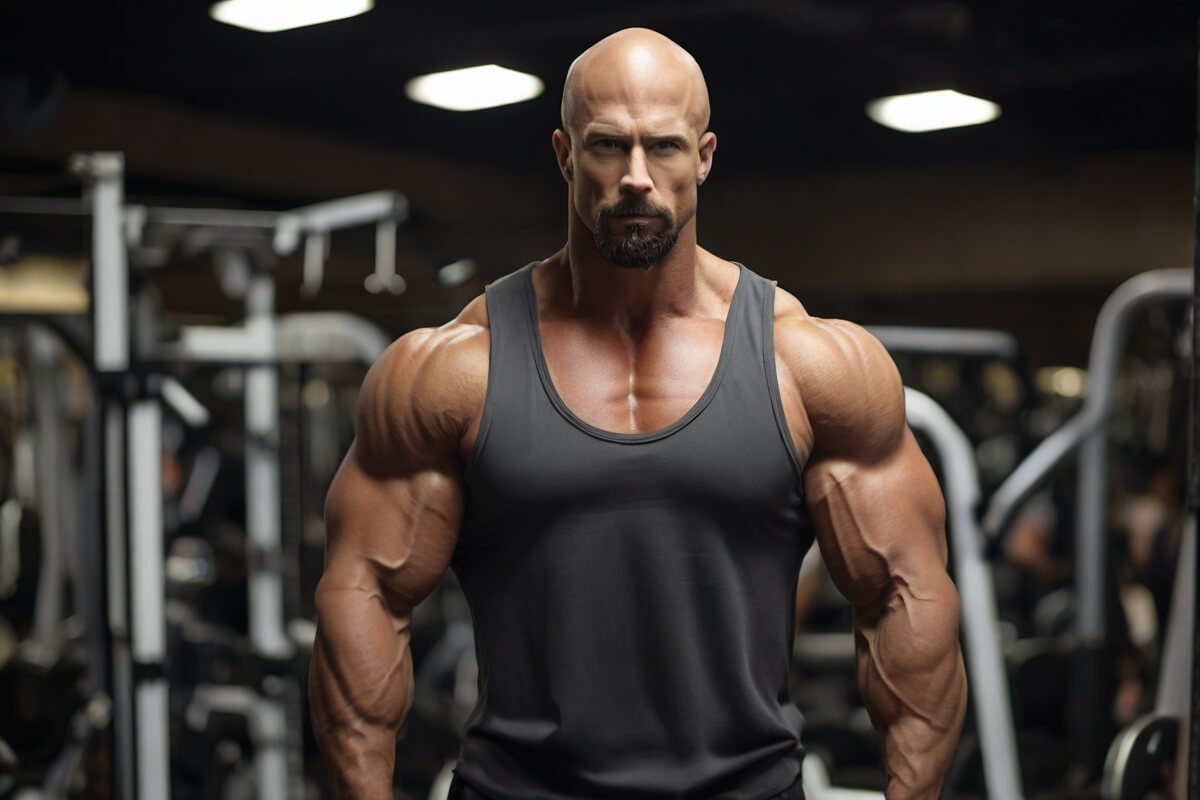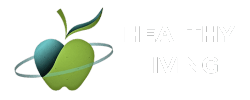If you want to build a strong and muscular physique, you need to know how to grow muscle mass fast. Muscle mass is not only important for your appearance, but also for your health, performance, and confidence. However, building muscle is not easy. It requires hard work, dedication, and a smart approach. In this article, we will reveal seven secrets to grow muscle mass fast, based on science and experience. You will learn how to train, eat, and recover for optimal muscle growth. By following these tips, you will be able to transform your body and achieve your fitness goals.
How I gained 20 pounds of muscle in 6 months

I have always been skinny and weak. Ever since I was a kid, I was bullied and teased for my lack of muscles. I hated my body and felt insecure. I tried to gain weight and muscle, but nothing worked. I ate a lot, but I only got fat. I lifted weights, but I only got injured. I felt hopeless and depressed.
Then, one day, I decided to change my life. I did some research and learned about the science of muscle growth. I realized that I was doing everything wrong. I was eating the wrong foods, training the wrong way, and neglecting my recovery. I decided to follow a proven plan that would help me grow muscle mass fast.
I started with a simple and effective workout routine that focused on compound exercises, progressive overload, and high volume. I trained three times a week, using a full-body split. I performed exercises like squats, deadlifts, bench presses, rows, and chin-ups. I increased the weight or reps every session, and aimed for 10 to 20 sets per muscle group per week.
I also improved my diet and nutrition. I ate more calories than I burned, with a surplus of 300 to 500 calories per day. I ate at least 1 gram of protein per pound of body weight, and got the rest of my calories from carbs and fats. I ate mostly whole and unprocessed foods, such as meat, eggs, dairy, grains, fruits, and vegetables. I also drank plenty of water and avoided alcohol and junk food.
I also prioritized my recovery and sleep. I made sure to rest at least 48 hours between workouts, and avoided overtraining and stress. I slept at least 8 hours per night, and took naps when possible. I also used some supplements to enhance my recovery and muscle growth, such as creatine, whey protein, and fish oil.
After six months, I saw the results. I gained 20 pounds of muscle and lost 10 pounds of fat. I looked and felt amazing. I was stronger, fitter, and healthier. I also gained confidence and respect. I was no longer bullied or teased. I was admired and praised. I realized that I had achieved my dream. I had grown muscle mass fast.
How muscle growth works and why it is possible to grow muscle mass fast

Muscle growth, or hypertrophy, is the process of increasing the size and strength of your muscle fibers. It occurs when your muscles are exposed to a stimulus that causes them to adapt and improve. The most common and effective stimulus for muscle growth is resistance training, or lifting weights.
When you lift weights, you create microscopic tears in your muscle fibers, which triggers an inflammatory response and activates satellite cells. Satellite cells are stem cells that can fuse with your muscle fibers and donate their nuclei. This increases the number of nuclei in your muscle fibers, which allows them to produce more proteins and repair the damage. This leads to an increase in the cross-sectional area and contractile force of your muscle fibers, which results in muscle growth.
However, muscle growth is not linear or constant. It depends on many factors, such as your genetics, age, sex, hormones, nutrition, training, and recovery. Some people can grow muscle faster than others, and some muscles can grow faster than others. However, it is possible for anyone to grow muscle mass fast, as long as they follow the right principles and methods.
According to research, the average rate of muscle growth for natural lifters is about 0.5 to 1 pound per month, or 6 to 12 pounds per year. However, this rate can vary depending on your training experience, muscle potential, and training program. For example, beginners can grow muscle faster than advanced lifters, as they have more room for improvement and adaptation. Similarly, people who follow a well-designed and periodized program can grow muscle faster than those who follow a random or suboptimal program.
Therefore, if you want to grow muscle mass fast, you need to optimize your training, nutrition, and recovery, and follow a plan that suits your goals and level. By doing so, you can maximize your muscle growth potential and achieve impressive results in a short period of time.
How to train for muscle growth and what exercises to do

Training for muscle growth is different from training for strength, endurance, or performance. It requires a specific approach that focuses on stimulating and exhausting your muscles, while allowing enough recovery and adaptation. Here are some general guidelines for training for muscle growth:
- Frequency: Train each muscle group at least twice per week, as this has been shown to be more effective than once per week for muscle growth. You can use a split that divides your body into two, three, or four parts, and rotate them throughout the week. For example, you can use a push-pull-legs split, a upper-lower split, or a full-body split.
- Volume: Perform 10 to 20 sets per muscle group per week, as this has been shown to be the optimal range for muscle growth. You can distribute your volume evenly across your sessions, or use a periodized approach that varies your volume from week to week. For example, you can use a linear, reverse, or undulating periodization.
- Intensity: Lift weights that are 60 to 80% of your one-rep max (1RM), or 6 to 15 reps per set, as this has been shown to be the most effective range for muscle growth. You can also use a variety of intensities, as long as you reach muscular failure or close to it on most of your sets. For example, you can use a pyramid, reverse pyramid, or drop set scheme.
- Rest: Rest 60 to 90 seconds between sets, as this has been shown to be the ideal range for muscle growth. You can also use shorter or longer rest periods, depending on your goals and preferences. For example, you can use supersets, giant sets, or circuits to reduce your rest time and increase your intensity, or use longer rest periods to increase your strength and power output.
- Exercises: Choose exercises that target your major muscle groups and allow you to use a full range of motion and a high degree of muscle activation. You can use a combination of compound and isolation exercises, as long as you prioritize the former over the latter. For example, you can use squats, deadlifts, bench presses, rows, and chin-ups as your main exercises, and use leg extensions, leg curls, flyes, lateral raises, and curls as your accessory exercises.
By following these guidelines, you will be able to design an effective and efficient workout routine that will help you grow muscle mass fast. However, you should also remember to vary your routine from time to time, as this will prevent boredom, plateaus, and overuse injuries. You can change your exercises, sets, reps, rest periods, or frequency every 4 to 6 weeks, or whenever you feel that your progress is slowing down or stopping.
How to eat for muscle growth and what foods to eat

Eating for muscle growth is just as important as training for muscle growth. You need to provide your body with enough calories, protein, and other nutrients to fuel your workouts and support your recovery and muscle growth. Here are some general guidelines for eating for muscle growth:
- Calories: Eat more calories than you burn, as this will create a positive energy balance and allow your body to build new muscle tissue. You can use a calorie calculator to estimate your daily calorie needs, and then add 300 to 500 calories to that number. This will create a moderate surplus that will help you gain muscle without gaining too much fat. You can also track your weight and body fat percentage, and adjust your calories accordingly. For example, if you are gaining more than 1 to 2 pounds per week, or more than 1% of body fat per month, you may need to reduce your calories. Conversely, if you are not gaining any weight or muscle, you may need to increase your calories.
- Protein: Eat at least 0.8 to 1.2 grams of protein per pound of body weight, as this will provide your body with enough amino acids to repair and build your muscle fibers. You can also eat more protein, as this may have some additional benefits, such as increasing your thermogenesis, satiety, and muscle retention. However, you should not exceed 2 grams of protein per pound of body weight, as this may have some negative effects, such as reducing your calorie intake, increasing your water intake, and impairing your kidney function. You should also choose high-quality protein sources, such as meat, eggs, dairy, fish, and whey protein, as they contain all the essential amino acids that your body needs.
- Carbs: Eat enough carbs to fuel your workouts and replenish your glycogen stores, which are the main source of energy for your muscles. You can eat 2 to 4 grams of carbs per pound of body weight, depending on your activity level, goals, and preferences. You can also vary your carb intake, depending on your training days and rest days. For example, you can eat more carbs on your training days, and less carbs on your rest days. You should also choose complex and fibrous carbs, such as oats, brown rice, quinoa, beans, and vegetables, as they provide you with more nutrients, energy, and satiety. You should avoid simple and refined carbs, such as sugar, white bread, white rice, and pastries, as they can spike your blood sugar and insulin levels, and cause fat storage and inflammation.
- Fats: Eat enough fats to support your hormone production, cell function, and brain health, which are essential for your muscle growth and overall well-being. You can eat 0.3 to 0.5 grams of fat per pound of body weight, or 20 to 30% of your total calories. You can also eat more or less fat, depending on your goals and preferences. However, you should not go below 0.2 grams of fat per pound of body weight, or 15% of your total calories, as this may impair your hormone balance and health. You should also choose healthy fats, such as olive oil, avocado, nuts, seeds, and fatty fish, as they provide you with essential fatty acids, antioxidants, and anti-inflammatory properties. You should avoid unhealthy fats, such as trans fats, hydrogenated oils, and fried foods, as they can increase your risk of heart disease, cancer, and other diseases.
By following these guidelines, you will be able to create a balanced and nutritious diet that will help you grow muscle mass fast. However, you should also remember to enjoy your food and have some flexibility, as this will prevent boredom, cravings, and binge eating. You can have some cheat meals or snacks once in a while, as long as you don’t overdo it and stay within your calorie and macronutrient goals.
How to recover for muscle growth and what to do

Recovering for muscle growth is just as important as training and eating for muscle growth. You need to allow your body to rest and heal, as this is when your muscle growth actually occurs. Here are some general guidelines for recovering for muscle growth:
- Sleep: Sleep at least 7 to 9 hours per night, as this will help your body to repair and build your muscle fibers, as well as regulate your hormones, reduce your stress, and improve your immune system. You can also take naps during the day, if possible, as this will enhance your recovery and performance. You should also avoid caffeine, alcohol, and blue light before bed, as they can interfere with your sleep quality and quantity.
- Hydration: Drink plenty of water and fluids, as this will help your body to flush out toxins, transport nutrients, lubricate your joints, and regulate your temperature. You can drink 0.5 to 1 ounce of water per pound of body weight, or more if you sweat a lot or live in a hot climate. You can also drink sports drinks, coconut water, or electrolyte solutions, if you need to replenish your electrolytes, such as sodium, potassium, and magnesium, which are lost through sweat and urine.
- Stretching and massage: Stretch and massage your muscles, as this will help you to relieve tension, improve blood flow, increase flexibility, and prevent injuries. You can stretch and massage your muscles before and after your workouts, as well as on your rest days. You can use static, dynamic, or foam rolling techniques, depending on your goals and preferences. You can also use a massage gun, a massage ball, or a massage therapist, if you have access to them.
- Supplements: Use supplements that can enhance your recovery and muscle growth, such as creatine, whey protein, BCAAs, glutamine, and fish oil. These supplements can help you to increase your strength, power, and muscle mass, as well as reduce your muscle soreness, inflammation, and oxidative stress. However, you should not rely on supplements alone, as they are not a substitute for a good diet and training program. You should also consult your doctor before using any supplements, as they may have some side effects or interactions with your medications or medical conditions.
By following these guidelines, you will be able to optimize your recovery and muscle growth, and avoid overtraining and burnout. However, you should also listen to your body and be flexible, as your recovery needs may vary depending on your individual factors, such as your age, genetics, stress level, and lifestyle. You should also take some deload weeks or rest days, if you feel that your performance is declining or your fatigue is increasing.
How to answer common questions and deal with common challenges

If you are trying to grow muscle mass fast, you may encounter some questions and challenges from yourself or others. Here are some of the most common ones and how to deal with them:
- How long does it take to grow muscle mass? The answer to this question depends on many factors, such as your starting point, your potential, your goals, your program, your diet, your recovery, and your consistency. However, as a general rule, you can expect to gain 0.5 to 1 pound of muscle per month, or 6 to 12 pounds of muscle per year, if you are a natural lifter. However, this rate can vary depending on your training experience, muscle potential, and training program. For example, beginners can gain muscle faster than advanced lifters, as they have more room for improvement and adaptation. Similarly, people who follow a well-designed and periodized program can gain muscle faster than those who follow a random or suboptimal program.
- How much weight should I lift to grow muscle mass? The answer to this question depends on your goals, your level, and your technique. However, as a general rule, you should lift weights that are 60 to 80% of your one-rep max (1RM), or 6 to 15 reps per set, as this has been shown to be the most effective range for muscle growth. You should also increase the weight or reps every session, or every week, as this will create a progressive overload, which is the key to muscle growth. However, you should not sacrifice your form or safety for the sake of lifting heavier weights, as this can lead to injuries and setbacks. You should also use a variety of weights and reps, as this will prevent boredom, plateaus, and overuse injuries.
- How much protein should I eat to grow muscle mass? The answer to this question depends on your body weight, your activity level, and your preferences. However, as a general rule, you should eat at least 0.8 to 1.2 grams of protein per pound of body weight, as this will provide your body with enough amino acids to repair and build your muscle fibers. You can also eat more protein, as this may have some additional benefits, such as increasing your thermogenesis, satiety, and muscle retention. However, you should not exceed 2 grams of protein per pound of body weight, as this may have some negative effects, such as reducing your calorie intake, increasing your water intake, and impairing your kidney function. You should also choose high-quality protein sources, such as meat, eggs, dairy, fish, and whey protein, as they contain all the essential amino acids that your body needs.
- How can I grow muscle mass without gaining fat? The answer to this question depends on your calorie intake, your macronutrient ratio, and your training intensity. However, as a general rule, you should eat more calories than you burn, but not too much, as this will create a moderate surplus that will help you gain muscle without gaining too much fat. You can use a calorie calculator to estimate your daily calorie needs, and then add 300 to 500 calories to that number. You can also track your weight and body fat percentage, and adjust your calories accordingly. For example, if you are gaining more than 1 to 2 pounds per week, or more than 1% of body fat per month, you may need to reduce your calories. Conversely, if you are not gaining any weight or muscle, you may need to increase your calories. You should also eat enough protein, which can help you preserve your muscle mass and metabolism, and limit your carbs and fats, which can cause fat storage and inflammation. You should also train hard and heavy, which can help you stimulate your muscle growth and burn your calories.
Conclusion
Growing muscle mass fast is possible, but it requires a smart and strategic approach. You need to train, eat, and recover properly, and follow a plan that suits your goals and level. By following the tips and secrets that we have shared in this article, you will be able to grow muscle mass fast, and achieve your dream physique. However, you should also remember that muscle growth is a long-term and gradual process, and that you need to be patient, consistent, and motivated. You should also enjoy the journey and celebrate your progress, as this will keep you going and make you happy.
We hope that you have found this article helpful and informative. If you have any questions, comments, or suggestions, please feel free to leave them below. We would love to hear from you and help you grow muscle mass fast. Thank you for reading and happy lifting!
Follow our social networks facebook, pinterest and see more tips
